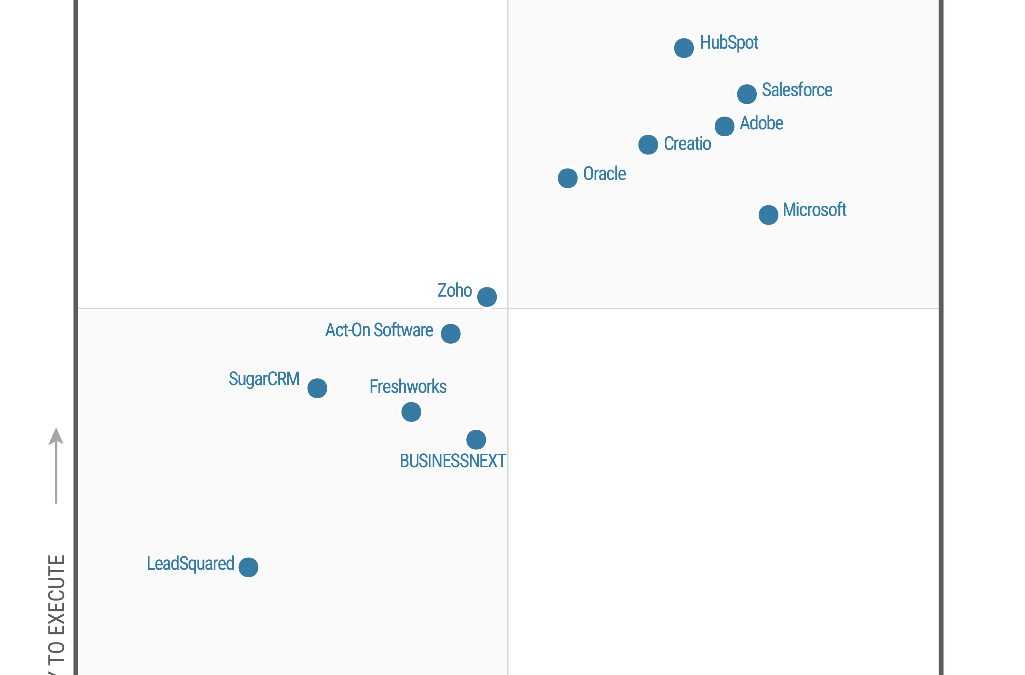
Microsoft named a Leader in the 2024 Gartner® Magic Quadrant™ for Sales Force Automation Platforms
This article is contributed. See the original author and article here.
As organizations globally grapple with the accelerated development and adoption of AI, business leaders are keen to use the potential of generative AI in transforming revenue-generating functions like sales. Investing in cutting-edge AI capabilities will set up sales teams to bolster customer experience, being able to understand the customer needs and delivering a highly personalized buying experience at a much faster pace.

Today, many sales teams are bogged down with legacy customer relationship management (CRM) systems designed decades ago, manually entering data and dealing with interfaces built for a slower pace, all of which leaves little time for what truly matters: connecting with customers. Sales leaders are now looking for AI-powered technology that helps them build a stronger pipeline, convert opportunities quicker, and build strong relationships with customers. By using technology that reduces the amount of time spent on manual tasks, sellers gain valuable hours each day to work on opportunities that are already in motion. In fact, Gartner predicts that by 2026, B2B sales organizations using generative-AI-embedded sales technologies will reduce the amount of time spent on prospecting and customer-meeting prep by more than 50%.1
With this context, today, we’re excited to share that Microsoft has been recognized as a Leader in the 2024 Gartner Magic Quadrant for Sales Force Automation for the fourteenth consecutive year.

Figure 1: Gartner Magic Quadrant for Sales Force Automation Platforms** (25 August 2024)
How Microsoft is making selling easier
Close more deals and spend less time on tasks
Microsoft Dynamics 365 Sales enables sellers to close more deals and increase personal productivity with a feature-rich CRM system that includes next-generation AI features out-of-box. Sellers can confidently develop and prioritize their pipeline with lead and opportunity qualification. Sales helps sellers deliver high-quality engagements with prospective customers by helping them prepare with relationship insights, next-step recommendations, and suggestions for improving their interactions. Sales managers can build high-performance sales teams with the ability to identify sellers who need coaching, monitor business health with intelligent forecasting, and scale best practices with automated sales sequences.
Microsoft Copilot in Dynamics 365 Sales works as a companion for sales representatives by providing generative AI-powered features designed to reduce manual and time-consuming work for sellers. For instance, sellers can quickly get up to speed with accounts, opportunities, contacts, and leads with record summarization and recent changes in the prospective customer organizations. They can also get news updates on accounts along with answers and content recommendations for that account using access to sales documents in SharePoint. Sellers can get help summarizing long email threads and responding to threads with Copilot drafting emails with infused CRM context. Right before taking meetings with customers, sellers can ask Copilot for meeting preparation assistance as well.
Access sales insights everywhere, no matter where you choose to work
At Microsoft, we know first-hand that sellers often spend their time outside of their CRM in productivity apps like Outlook and Microsoft Teams. That’s why Microsoft 365 Copilot for Sales seamlessly brings CRM insights right into the seller’s flow of work. Copilot for Sales brings together Microsoft 365 Copilot with a role-based agent that connects with your CRM platform to bring sales insights and generative AI into the flow of work. Sellers can simplify their daily tasks by using Copilot to draft e-mails, set up meetings, or summarize previous meetings and e-mail threads. They can save time with Copilot by generating pitch decks, meeting preparation briefs, and data visualizations in PowerPoint, Word, and Excel. When it’s time for a sales call, sellers can use Copilot to get insights right within Teams, with AI-generated sales tips, related information, and answers to customer’s questions. After the call, Copilot provides a rich meeting recap that allows the seller to stay focused on next steps.
Integration with an expanded ecosystem
Organizations can unlock the full potential of the Microsoft Cloud to empower their sales teams with seamless integration at every step. The Sales integration with Teams fosters open communication and collaboration across marketing, sales, and service departments. With automatic data synchronization between Microsoft 365 apps and Sales or other CRM platforms, sellers can access customer and opportunity information directly within Teams and Outlook. Additionally, sales operation leads and managers can utilize Microsoft Power BI to analyze trends and generate reports. Microsoft Power Platform further enables sellers to automate workflows, develop apps, and analyze data, enhancing agility and driving innovation.
Our customers’ success
First West Credit Union is headquartered in Langley, British Columbia, and operates through four locally-known brands to serve members across the province. After a comprehensive request for proposal (RFP) process involving multiple vendors, First West decided to replace its earlier CRM solutions with Sales. The implementation was completed in record time.
“In my experience, these are typically 24-month journeys. The initial deployment of our Sales system was completed in just 11 months. This expedited rollout enabled us to seamlessly transition from and decommission our outdated legacy CRM systems, marking a significant achievement in our digital transformation journey.”
Darrell Jaggers, CIO & Chief Transformation Officer, First West Credit Union
The sales advisors at First West Credit Union are already realizing value. The manual reporting process used to take 20 minutes, but member discovery now takes only a few minutes with Sales, driving productivity gains of more than 75%. Within the first month of launching Sales, First West’s advisors had completed more than 2,600 member discoveries, marking a 54% surge in adoption compared to the previous approach.
Alkemy, a specialty chemical systems company, transformed its sales operations by adopting Sales in 2019. Partnering with Intelibis, they automated customer segmentation, digitized sales processes, and integrated with Power Automate and SharePoint. This shift reduced their operational burden by 90%, generated over 2,900 reports, and significantly improved customer service. Alkemy now aims to become fully digital, using predictive controls to expand in the marketplace.
As organizations continue to adopt AI at an unprecedented pace, at Microsoft we are focused on delivering the most cutting-edge experiences built on trust and security in leading products like Sales.
Learn more about Dynamics 365 and sales
- Read the 2024 Gartner Magic Quadrant for Sales Force Automation Platforms report
- Microsoft Dynamics 365
- Dynamics 365 Sales
- Microsoft 365 Copilot for Sales
Contact your Microsoft representative to learn more about the value and return on investments, as well as the best way you can get started with Sales and Copilot for Sales.
Sources:
- Gartner, Magic Quadrant for Sales Force Automation Platforms, Adnan Zijadic, Guy Wood, Varun Agarwal, Steve Rietberg, 24 August 2024.
*Gartner is a registered trademark and service mark and Magic Quadrant is a registered trademark of Gartner, Inc. and/or its affiliates in the U.S. and internationally and are used herein with permission. All rights reserved. Gartner does not endorse any vendor, product or service depicted in its research publications, and does not advise technology users to select only those vendors with the highest ratings or other designation. Gartner research publications consist of the opinions of Gartner’s research organization and should not be construed as statements of fact. Gartner disclaims all warranties, expressed or implied, with respect to this research, including any warranties of merchantability or fitness for a particular purpose.
**This graphic was published by Gartner, Inc. as part of a larger research document and should be evaluated in the context of the entire document. The Gartner document is available upon request from Microsoft.
The post Microsoft named a Leader in the 2024 Gartner® Magic Quadrant™ for Sales Force Automation Platforms appeared first on Microsoft Dynamics 365 Blog.
Brought to you by Dr. Ware, Microsoft Office 365 Silver Partner, Charleston SC.








Recent Comments